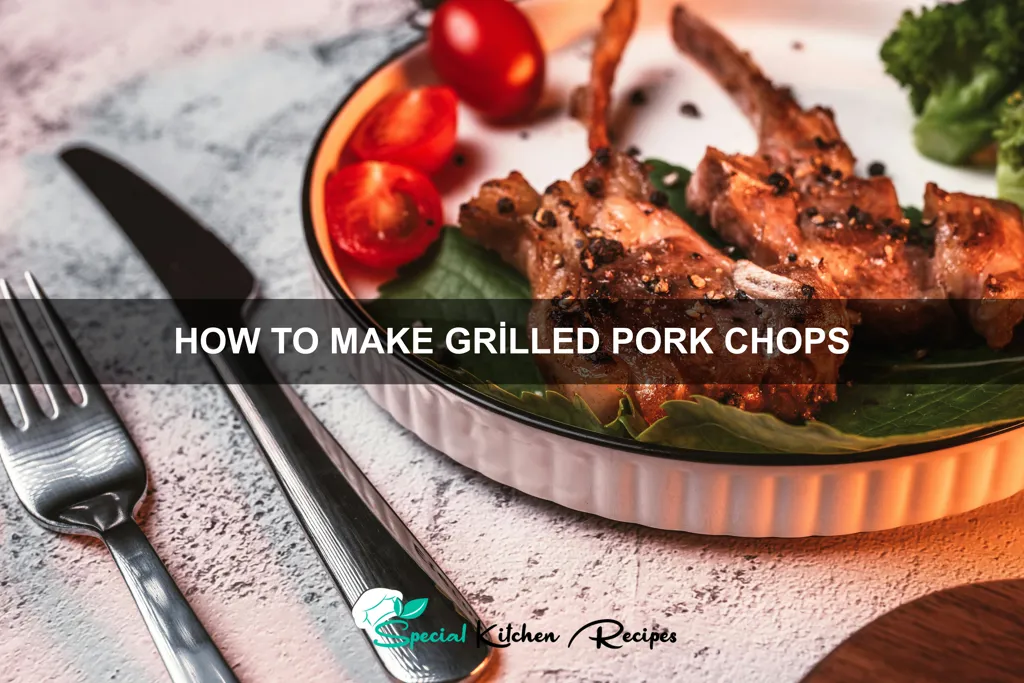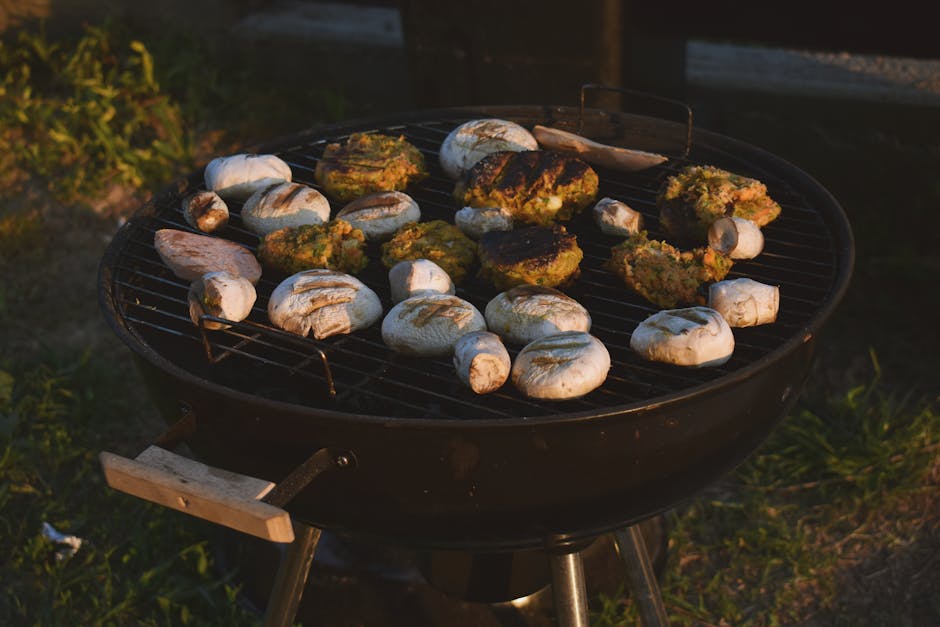The humble pork chop, a culinary staple across the globe, boasts a history as rich and flavorful as the dish itself. Its origins trace back to the domestication of pigs, thousands of years ago. While the exact timeline is debated, archaeological evidence suggests pig farming and subsequent pork consumption date back to at least the Neolithic period. Different cultures developed their own unique methods of preparing pork, leading to the diverse range of pork dishes we enjoy today. The grilling method, in particular, has a long and storied history, likely emerging alongside the development of early tools for controlling fire. The simplicity and direct heat of grilling allow the pork chop’s natural flavors to shine, making it a perennial favorite across various culinary traditions.
In the United States, pork chops hold a significant place in popular culture and home cooking. Pork is the most consumed meat in the country, with an average American consuming over 50 pounds per year. This high consumption rate reflects the versatility of pork, its affordability, and its accessibility. Grilling pork chops, specifically, has become a summer barbecue staple, symbolizing outdoor gatherings, family reunions, and celebrations. The ease of preparation and the satisfyingly juicy result make it a popular choice for both novice and experienced cooks. Interestingly, the preference for specific cuts of pork chops varies regionally, with some preferring thicker, bone-in chops while others opt for leaner, boneless options.
Beyond the American context, grilled pork chops hold cultural significance in numerous other countries. In many parts of Europe, particularly in Mediterranean countries, grilled pork is a cornerstone of traditional cuisine. Often marinated in herbs and spices unique to the region, these grilled pork preparations showcase the regional diversity of flavors and cooking techniques. From the smoky paprika-infused chops of Spain to the herb-rich grilled pork of Greece, the global variations in this seemingly simple dish demonstrate the adaptability and enduring appeal of pork as a culinary ingredient. With the rising popularity of outdoor cooking and grilling around the world, the grilled pork chop continues to be a globally celebrated dish, transcending cultural boundaries and uniting food lovers everywhere.
Ingredients and Measurements
This recipe yields four delicious grilled pork chops. The success of this dish hinges on using high-quality ingredients and precise measurements. Don’t be tempted to skimp on the good stuff!
Pork Chops: You’ll need four bone-in pork chops, each approximately 1-inch thick. Using bone-in chops adds flavor and helps them cook more evenly. Aim for chops that are similar in size and thickness for consistent grilling time. If your chops vary significantly in size, consider pre-cooking the thicker ones slightly before grilling to prevent overcooking the thinner ones.
Olive Oil: 2 tablespoons of extra virgin olive oil are needed for both marinating and brushing during grilling. Extra virgin olive oil provides a rich flavor and a higher smoke point compared to other oils, making it ideal for grilling. If you don’t have extra virgin olive oil, you can substitute with another high-smoke-point oil like avocado oil.
Garlic: 4 cloves of garlic, minced. Freshly minced garlic is best, offering a vibrant flavor that is superior to pre-minced garlic. If you’re short on time, you can use 1 teaspoon of pre-minced garlic, but keep in mind there can be a slight difference in taste.
Seasoning Blend: This recipe uses a simple yet effective blend. We recommend 1 teaspoon of salt, ½ teaspoon of black pepper, ½ teaspoon of paprika, and ¼ teaspoon of garlic powder. Adjust the seasoning to your preference, but don’t be afraid to experiment with other herbs and spices such as rosemary, thyme, or oregano. Freshly ground pepper is always preferred over pre-ground.
Optional Additions: To enhance the flavor profile, consider adding other ingredients. A tablespoon of lemon juice adds brightness, while a spoonful of Dijon mustard brings a tangy depth. Experiment with different flavor combinations to discover your personal favorite. Remember to adjust the seasoning accordingly if adding additional ingredients.
Note: All measurements are approximate. Adjust quantities based on your preference and the size of your pork chops. Always ensure your meat is cooked to a safe internal temperature of 145°F (63°C) as measured with a meat thermometer. This is crucial for food safety and ensures the pork is cooked through without being dry.
Equipment Needed
Grilling pork chops requires a relatively straightforward setup, but the right tools will make all the difference in achieving perfectly cooked, flavorful results. Let’s break down the essential equipment you’ll need, along with some helpful tips.
1. Grill: This is, of course, the centerpiece of the operation. You can use a gas grill, charcoal grill, or even a smaller tabletop grill, depending on your preference and the number of pork chops you’re cooking. Ensure your grill is clean before you begin. A clean grill prevents flare-ups and imparts a cleaner flavor to your pork chops. If using a charcoal grill, allow ample time for the coals to achieve the desired temperature (around medium-high heat).
2. Grill Tools: A good set of grilling tools is essential. You’ll need a pair of long-handled tongs (at least 12 inches) for safely flipping the pork chops and maneuvering them around the grill grates. A spatula is also helpful for lifting and checking the doneness. A grill brush is crucial for cleaning the grill grates before and after cooking. Consider a grill thermometer for more precise temperature control, especially with charcoal grilling.
3. Meat Thermometer: This is arguably the most important piece of equipment. A reliable instant-read meat thermometer is vital for ensuring your pork chops reach a safe internal temperature of 145°F (63°C). Do not rely on visual cues alone; the only way to guarantee food safety is by using a thermometer. Invest in a good quality thermometer with a fast response time for accurate readings.
4. Platter and Serving Utensils: Once your perfectly grilled pork chops are ready, you’ll need a platter to present them attractively. Choose a platter that can withstand the heat. Use heat-resistant serving utensils to avoid burning yourself while transferring the hot pork chops from the grill to the platter. A set of serving tongs and a spatula will be ideal.
5. Optional but Recommended: A grill cover can help protect your grill from the elements when not in use. Heavy-duty aluminum foil can be useful for creating a makeshift drip pan to catch excess grease, preventing flare-ups and making cleanup easier. Finally, some people prefer using a marinade injector to infuse the pork chops with flavor before grilling, but this is not strictly required.
By gathering all this equipment beforehand, you’ll be well-prepared to grill delicious and safe pork chops.
Preparation of Pork Chops (e.g., Marinating, Seasoning)
Before you even think about firing up the grill, proper preparation of your pork chops is key to achieving juicy, flavorful results. This involves both seasoning and, optionally, marinating. Choosing the right cut is also crucial; look for chops that are about 1 inch thick for even cooking.
Let’s start with seasoning. A simple yet effective seasoning blend can elevate your pork chops significantly. For four 1-inch thick pork chops, I recommend using about 1 teaspoon of salt, ½ teaspoon of black pepper, and ½ teaspoon of garlic powder. You can also add other spices to suit your taste, such as paprika (1/4 teaspoon), onion powder (1/4 teaspoon), or even a pinch of cayenne pepper for a little heat. Generously season both sides of the chops, ensuring the seasoning is evenly distributed. Pressing the seasoning gently into the meat helps it adhere better.
Marinating is an optional step but highly recommended for added flavor and tenderness. A simple marinade can be made with ¼ cup olive oil, 2 tablespoons of soy sauce, 1 tablespoon of lemon juice, 1 clove of minced garlic, and ½ teaspoon of dried oregano. Combine all the marinade ingredients in a bowl or zip-top bag. Add the pork chops, ensuring they are fully submerged in the marinade. Refrigerate for at least 30 minutes, or preferably for 2-4 hours for optimal flavor penetration. Do not marinate for longer than 4 hours to avoid over-tenderizing the meat.
If you’re short on time, a quick dry brine can also work wonders. Simply sprinkle the pork chops generously with salt (about 1 ½ teaspoons per pound of pork chops) at least 30 minutes before grilling. This helps to season the meat and retain moisture during cooking. Pat the chops dry with paper towels before grilling, regardless of whether you’ve marinated or dry-brined them. This helps to achieve a good sear on the grill.
Remember, the goal is to enhance the natural flavor of the pork chop, not mask it. Experiment with different herbs and spices to find your perfect combination. Always ensure your pork chops reach an internal temperature of 145°F (63°C) as measured by a meat thermometer before removing them from the grill to guarantee they are cooked safely.
Grilling Techniques: Mastering Heat and Time
Grilling pork chops to perfection hinges on mastering two key elements: heat control and cooking time. Getting these right ensures juicy, flavorful chops every time. We’ll explore both in detail.
Heat Control: The ideal grilling temperature for pork chops is medium-high heat, around 350-400°F (175-200°C). You can achieve this by preheating your grill for 10-15 minutes before placing the chops on. To check the temperature, hold your hand about 4 inches above the grate; if you can comfortably hold it there for 4-5 seconds, it’s medium-high. If it’s too hot, you’ll need to reduce the heat by adjusting the vents on your grill or moving the chops to a less intense zone. Avoid high heat, as this will lead to burning the exterior before the inside is cooked through.
Two-Zone Grilling: For more control, utilize a two-zone grilling method. This involves creating a hotter zone for searing and a cooler zone for indirect cooking. Preheat one half of your grill to medium-high heat and leave the other half at a lower temperature. Sear the chops in the hotter zone for 2-3 minutes per side to develop a beautiful crust, then move them to the cooler zone to finish cooking.
Cooking Time: The cooking time for pork chops depends on their thickness. For 1-inch thick chops, aim for a total grilling time of 8-10 minutes. For thicker chops (1.5 inches or more), you’ll need to extend the time to 12-15 minutes. Always use a meat thermometer to ensure the chops reach an internal temperature of 145°F (63°C). This is the safe minimum internal temperature for pork, guaranteeing it’s cooked through and safe to eat.
Checking for Doneness: Insert the meat thermometer into the thickest part of the chop, avoiding the bone. Do not rely solely on visual cues like color changes, as these can be unreliable. The thermometer provides the most accurate reading. Once the temperature reaches 145°F (63°C), remove the chops from the grill and let them rest for 5-10 minutes before serving. This resting period allows the juices to redistribute, resulting in a more tender and flavorful chop.
Pro Tip: Brining or marinating your pork chops beforehand will enhance their flavor and moisture, making them more forgiving if you slightly overcook them. A simple brine of salt, sugar, and water for 30 minutes to an hour can make a significant difference.
By carefully monitoring the heat and using a meat thermometer, you can confidently grill delicious, perfectly cooked pork chops every time.
Checking for Doneness
Achieving perfectly cooked pork chops requires careful attention to doneness. Overcooked chops are dry and tough, while undercooked chops pose a food safety risk. There are several reliable methods to ensure your pork chops are cooked to a safe internal temperature of 145°F (63°C) as recommended by the USDA.
The first and most accurate method is using a meat thermometer. This is the gold standard for ensuring food safety and achieving consistent results. Insert the thermometer into the thickest part of the chop, avoiding the bone, and check the reading. Do not rely on visual cues alone, as color can be deceptive.
Another method is the finger test, though it’s less precise than a thermometer. Gently press the center of the cooked pork chop. Compare the firmness to your finger:
- Rare: Feels very soft, like the fleshy part of your cheek.
- Medium-rare: Feels slightly firmer, like your chin.
- Medium: Feels firmer still, like your forehead.
- Well-done: Feels very firm, like your nose.
Remember, this method is a guideline and should be used in conjunction with a visual inspection. Always use a thermometer to confirm doneness, especially for larger or thicker chops.
Visual cues can offer additional confirmation, but should not be your sole determinant. Look for the pork to be opaque throughout, with a slight pink hue remaining if you prefer medium-rare to medium doneness. Avoid overcooking, as this will lead to dry, tough meat. The juices should run clear, not pink or red.
Once the thermometer registers 145°F (63°C), immediately remove the pork chops from the grill. Allow them to rest for 3-5 minutes before serving. This resting period allows the juices to redistribute throughout the meat, resulting in a more tender and flavorful chop. Resting is crucial, even if you’re impatient to eat!
Finally, remember that grill temperatures can vary. Adjust cooking times as needed based on the thickness of your chops and the heat of your grill. Thicker chops will require longer cooking times. Always prioritize food safety and accurate temperature measurement to ensure perfectly cooked and delicious pork chops every time.
Resting the Pork Chops
Resting your pork chops after grilling is just as crucial as the grilling process itself. It’s a step often overlooked, but it significantly impacts the final quality of your dish. Proper resting allows the juices, which have been pushed to the outer edges of the meat during cooking, to redistribute evenly throughout the chop. This results in a more tender, juicy, and flavorful final product.
How long should you rest your pork chops? A good rule of thumb is to rest them for 5-10 minutes for chops that are about 1 inch thick. For thicker chops (1.5 inches or more), increase the resting time to 10-15 minutes. The thicker the chop, the longer it needs to rest. Using a meat thermometer is key; ensure the internal temperature reaches 145°F (63°C) before removing them from the grill.
Where should you rest your pork chops? Rest them on a clean plate or cutting board. Avoid placing them directly on a cold surface, as this can cause rapid temperature loss and potentially lead to uneven cooking. A wire rack placed over a plate is ideal, as it allows air circulation around the chops, preventing them from stewing in their own juices.
What’s the best way to rest them? Loosely tent the rested pork chops with aluminum foil. This helps to trap the heat and moisture, allowing the juices to redistribute without drying out the meat. Do not wrap them tightly, as this can trap steam and make the chops soggy. Think of it as a gentle hug, not a tight squeeze.
Why is resting so important? During cooking, muscle fibers contract, squeezing out juices. Resting allows these fibers to relax, absorbing the juices back into the meat. This leads to a more succulent and flavorful chop. Ignoring this step can result in dry, tough pork chops, even if you cooked them to the perfect temperature. Patience is key – those few extra minutes will make a world of difference in the final taste and texture.
Once the resting period is complete, you can slice your pork chops against the grain for maximum tenderness and serve immediately. Enjoy the juicy, flavorful results of your perfectly rested grilled pork chops!
Recommendations
For the most flavorful and juicy grilled pork chops, ensure your pork chops reach an internal temperature of 145°F (63°C) as measured with a meat thermometer. Overcooking will result in dry, tough meat. Allow the pork chops to rest for 5-10 minutes after grilling before slicing and serving; this allows the juices to redistribute, resulting in a more tender chop.
Serving Suggestions: Grilled pork chops are incredibly versatile. They pair beautifully with a variety of sides. Consider serving them with a fresh summer salad featuring seasonal vegetables like tomatoes, cucumbers, and bell peppers. A vibrant slaw, either creamy or vinegar-based, provides a delightful contrast in texture and flavor. Alternatively, roasted vegetables such as asparagus, zucchini, or sweet potatoes complement the richness of the pork.
Complementary Dishes: To enhance your meal, consider serving your grilled pork chops with a flavorful sauce. A simple pan sauce made with the pork chop drippings, garlic, and herbs is an excellent choice. A tangy chimichurri sauce or a sweet and spicy barbecue sauce also works well. For a heartier meal, serve the pork chops with creamy mashed potatoes or polenta.
Storage: Leftover grilled pork chops should be stored in an airtight container in the refrigerator for up to 3-4 days. To freeze, wrap the chops tightly in plastic wrap and then place them in a freezer-safe bag or container. They can be stored frozen for up to 3 months. Always ensure food is properly cooled before refrigerating or freezing to prevent bacterial growth.
Nutritional Information (per serving, approximate values will vary based on cut and preparation): A 4-ounce grilled pork chop contains approximately 200-250 calories, 20-25 grams of protein, 10-15 grams of fat, and minimal carbohydrates. Nutritional values can significantly change based on added sauces or marinades. This information is a general guideline and should not be considered a substitute for professional nutritional advice.





